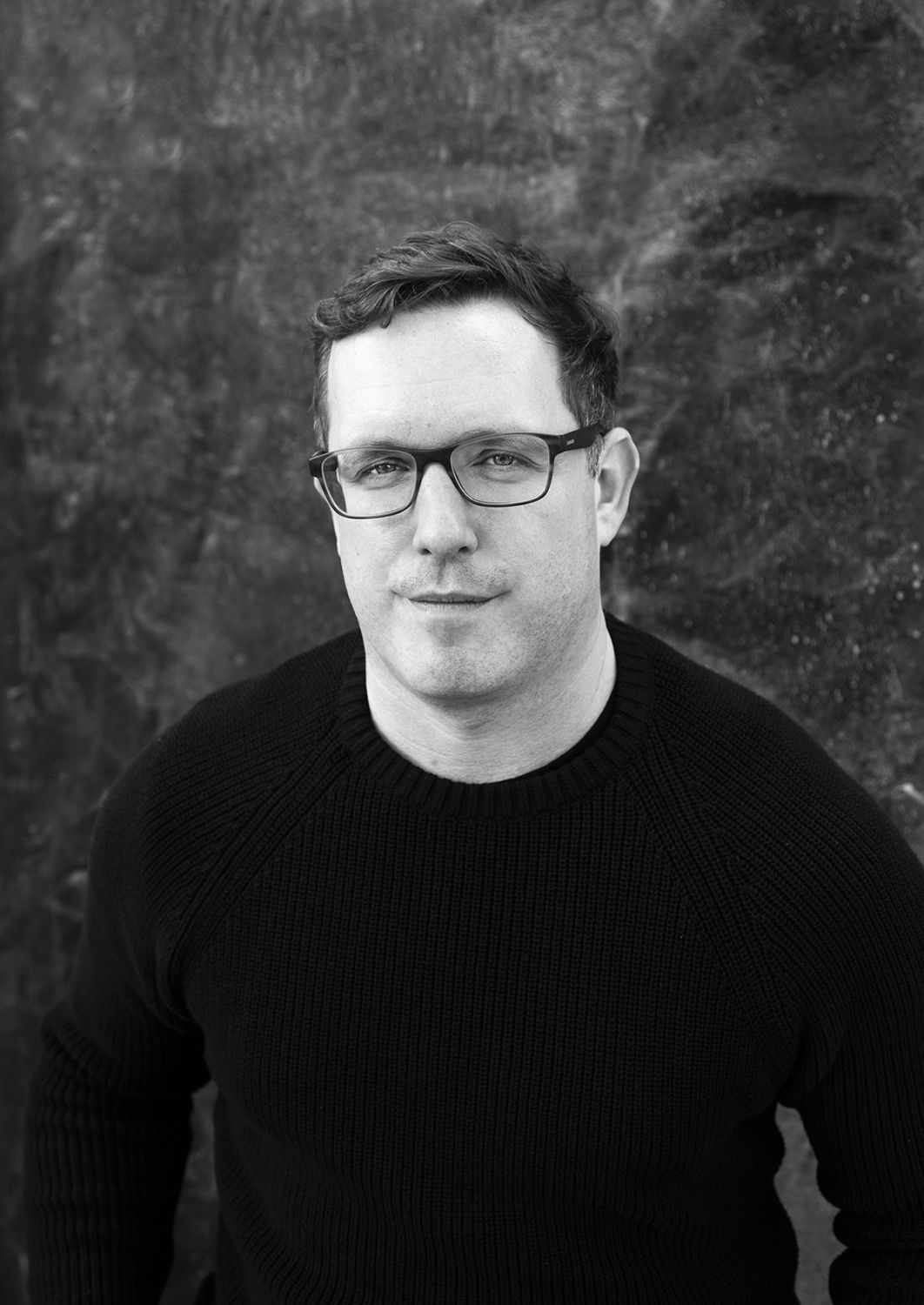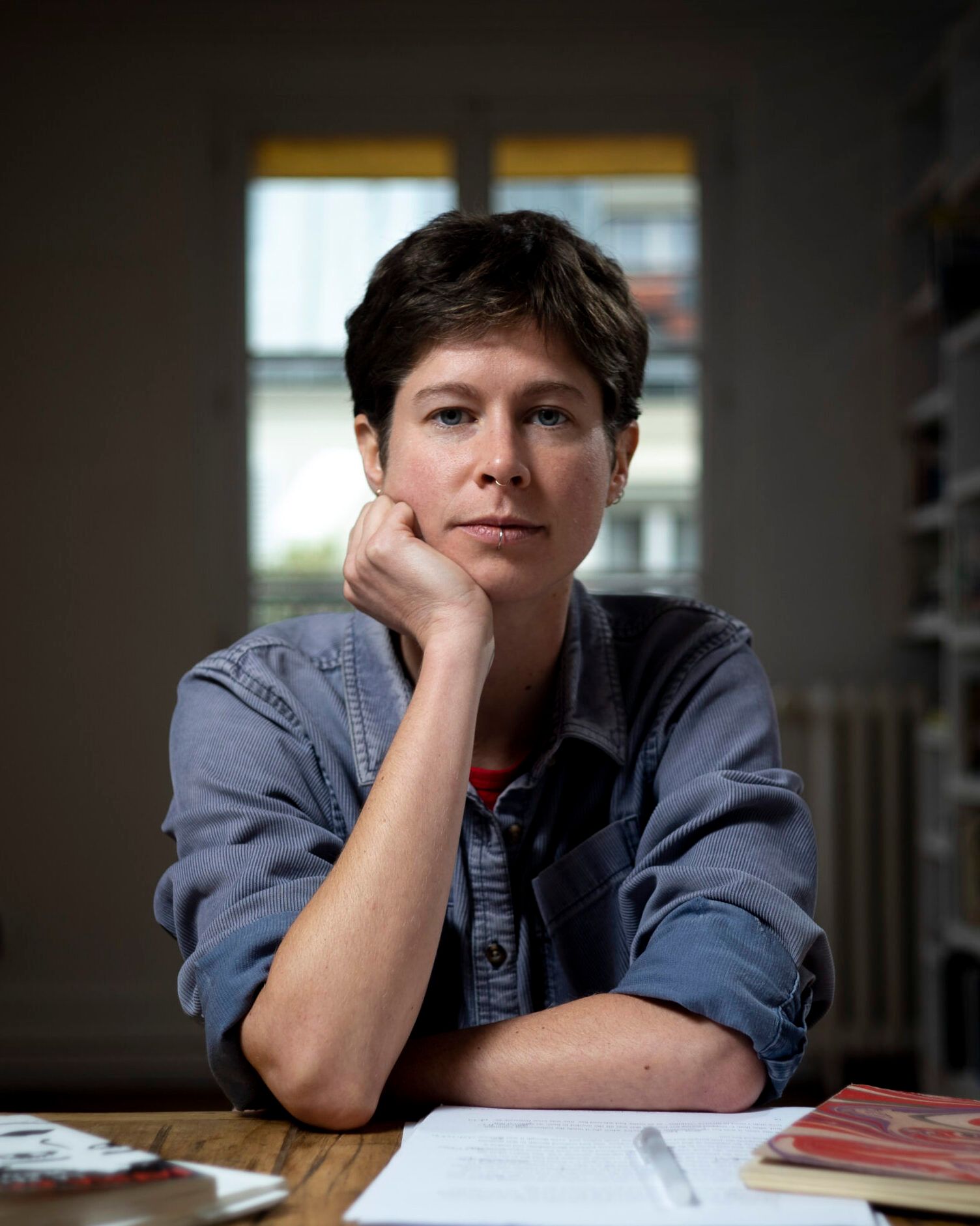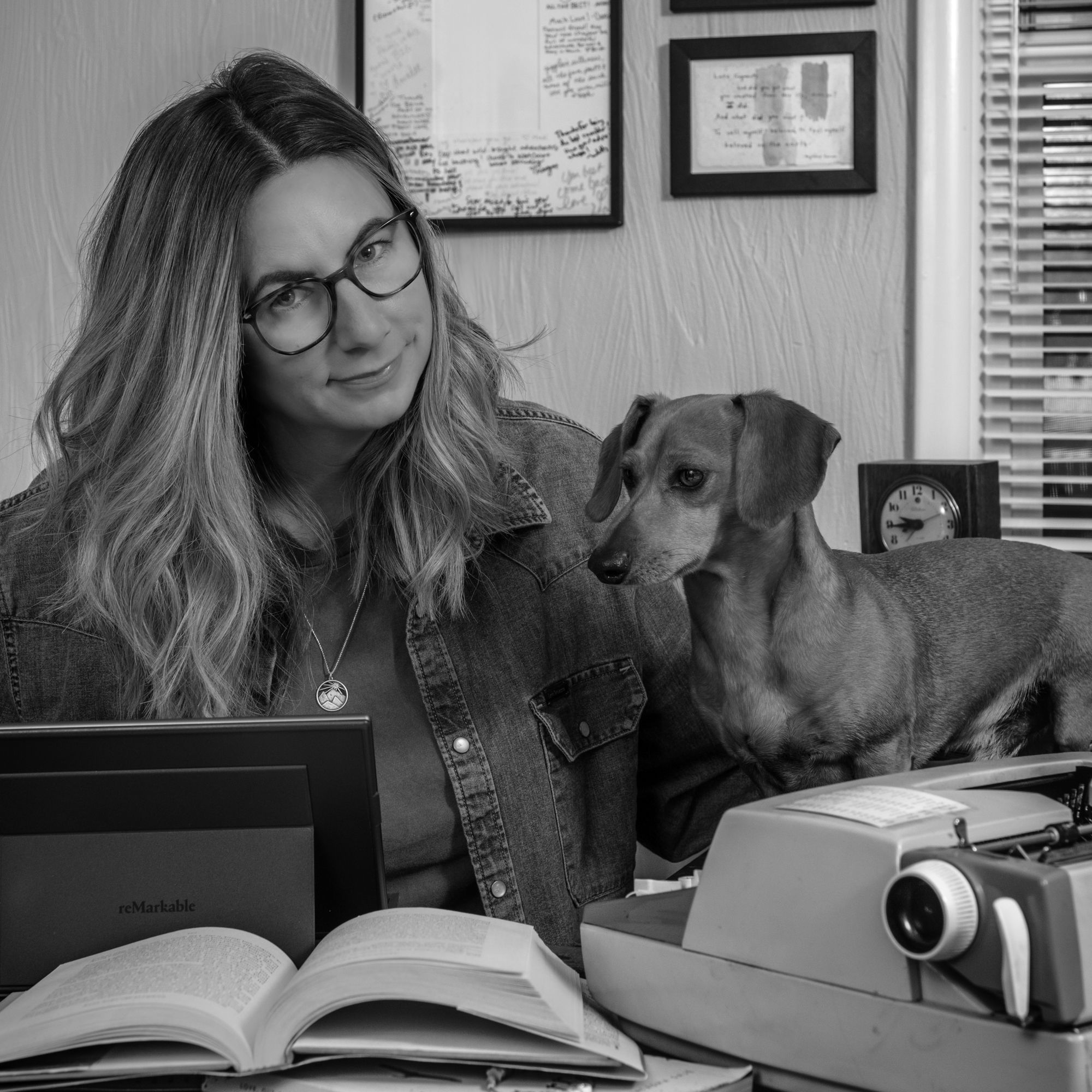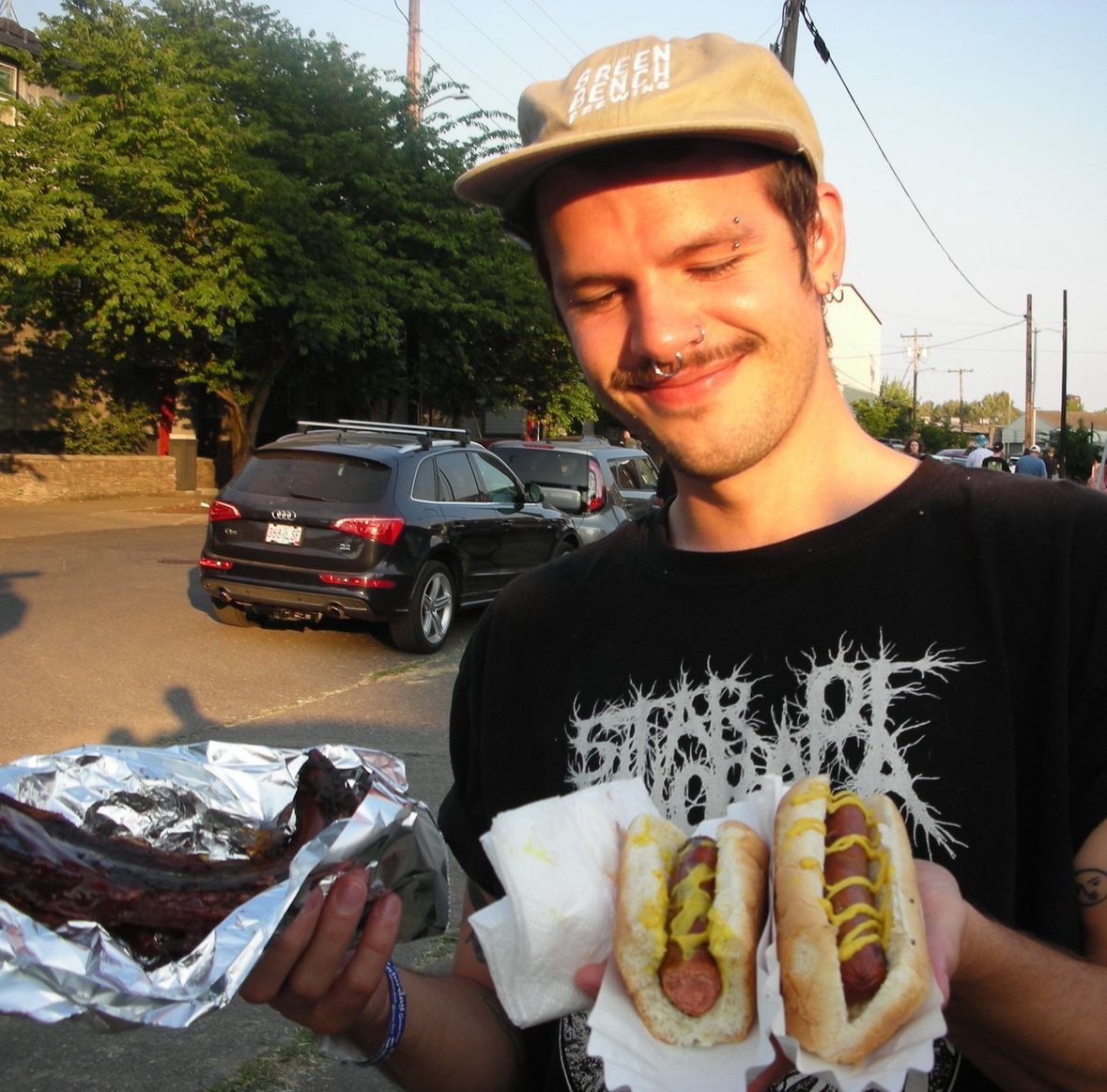Weeks into the pandemic, I lie on my bed at midday, listless. Outside, the fig leaves glow in the sun, electric-green mittens, all thumbs. Bees hang suspended in the garden. Yesterday I rearranged the furniture. Side tables shoved across the room, pictures removed. Nail spikes await my decisions about what to rehang, where. Does any of it matter? Upstairs, my son sorts Legos: warm colors, cool colors, translucents, dark grays, light grays. For weeks, room-bound, he inventories, the way Nepali women in the house where I lived so long ago sifted rice—the same soft, rhythmic raking; the same immersion in work that never ends.
Such activities fit this newly elastic time. Hours balloon only to constrict into suffocating rubber necks. Like a lump of salt dough, time, once a pinched pot, now shapeshifts into a heavy-winged dragon, a sad cat, a leaf etched with veins. Plenty to do, nowhere to go. Also, an actual mound of salt dough molders in the fridge, until I force my children to sculpt something so we can take photos to upload, attach to their e-learning pages, and send to the art teacher (all of which takes an extraordinary amount of time). My daughter, in five seconds, forms that simplest shape, a ring.
“Here,” she says. “It’s a doughnut. Take the picture.”
Her older brother asks, “Isn’t it bad to use all this flour for art when people can’t get flour at the store? And people are hungry?”
When the stay-at-home order in North Carolina descended, Adam said, “It’s just a bandh.” In Nepali, the word bandh means “strike,” or literally, “closed.” Maoists decreed these strikes during a guerrilla war against the government that began in 1996 and had escalated by 2000, when we arrived. During a bandh, heavy metal garage doors surged over storefronts, students stayed home, government offices closed. Together Adam and I remembered this sudden stop from our time there: the word-of-mouth news; the scurry to get flour and potatoes; the simultaneous deflation (here we go) and elation (something’s happening!). “Sometimes, just getting food from the bazaar is a successful day,” a veteran Peace Corps volunteer counseled us in training. In other words, lower your expectations. How lovely to have a little leeway, to get nothing done, to subsist and claim victory.
These early lockdown days have the same slack to them as my days in Nepal did, when time lurched and reeled in a way it hasn’t before or since—until now. In memory, that looseness takes on a velvety nap, a lush spot where the pattern changes. I charted intense bouts of productivity and futility, phases that were meaningless to anyone else or their expectations of me, which hardly existed. I set my own milestones: one hundred books, each title dutifully recorded on journal pages rippled from the damp heat. The six-month anniversary of my post-mate leaving. A year in-country. Then two years.
In Nepali, bholiparsi means “tomorrow or the day after” but actually means “tomorrow, or in five years, or possibly never.” There, I knew that what I thought would happen might not, and even probably wouldn’t, though I couldn’t predict what might happen instead. Here, that same uncertainty roosts. We who are so used to declarative claims on the future now speak only in ifs. The surprise is how pleasurable it is.
To say this while people are dying seems the moral equivalent of a 22-year-old reading Sylvia Plath’s diaries and eating chocolate while waiting for a bandh to end; meanwhile, Maoists conscripted children in the hills sixty miles away. Here, we water the sugar snap peas in windowsill cups and drape lumpy strips of papier-mâché over balloons; meanwhile, patients die with only nurses to comfort them, or no one. In one hand, I clutch grief and free-range fear; in the other, the reclamation of space eaten by our regular lives. Maybe life always throbs this way, just less starkly so: great suffering in the background; in the foreground, tiny tunnels into joy.
Each morning in Nepal I woke under the filmy mosquito net with a feeling I hadn’t known at home: relief. No anxiety. I hadn’t even named it until I noticed its absence. Who knew where I was or what I was doing? Who cared?
Twenty years later, that same expansiveness blossoms, like we’ve somersaulted outside time to find ourselves in this strange new country. Each morning, instead of bolting awake to the alarm and rushing out of the house, I wake naturally in the blue bedroom light, talk with Adam until the children crawl into the bed. When he gets up to shower, I linger with the knees and elbows of three children who nuzzle in ways they won’t much longer. The oldest is 11. This year may be the end of my decade-plus of being physically needed, prodded, tweaked, rubbed, suckled, and pinched every hour I am home. They recount dreams of diving to the ocean floor and finding their grandmother there. We play Bears in a Bear Cave, pulling the sheets over our heads and pretending to eat all the supplies the youngest has gathered for our long winter: raspberries, honey, marshmallows mixed with gummy bears. Most of us wear some version of pajamas all day long.
***
We think the summer will feel better, and it almost does. The children no longer weepily click through 28 versions of the same math problem. Adam and I no longer teach and grade downstairs while the youngest takes all the clothes out of his dresser and launches them up to catch on the ceiling fan blades in a soft chandelier of pant legs and underwear. Instead, we camp. We draw. We make lime sherbet. We yell at each other, then make up: there’s no one else to talk to. Life is pleasant and unbearable. I remember how easily respite pitches into stasis.
The heat in July lies down on our necks. Everything feels portentous, blurry, like a metaphor I can’t see the other half of. At four a.m. I lie awake listening to the cat locked in the basement, rhythmically bumping his head against the plastic cat door. The sound is my own brain, knocking against the possibilities (Will the virus spread to my grandmother’s nursing home? Will schools reopen? If so, will I send my kids?).
Desperate for an excursion, I take two kids out for an ill-timed noonday trip to the creek. The muggy air drones with insects, and on the hot walk home, they’ll both cry. They dangle plastic fishing rods—neon aqua, orange—into the drab, fishless creek. On a few inches of leaf-clogged muck, the bobbins float. The futility resonates. So does the hope. My five-year-old fishes in chatty, oblivious optimism, certain that the act of holding the rod will ensure he catches a fish. My daughter, eight, savors the irony. She sees it not as endeavor but game, pretending loudly to her brother (“I hope you get a big one!”) and then stage-whispering to me (“Are there even any fish in here?”).
“Yep! There are!” he answers, having overheard the whisper but missed the cynicism.
Though maybe I’m not giving him enough credit. A few days before I’d heard him upstairs, crooning to himself, Is it time to jump out a window? Is it time to start eating yourself?
Nepal did not always feel like retreat, either. Undiagnosed gastrointestinal woes marred my health. Sweating and shaky, I’d bike to school, unable to do anything but gulp boiled water. Some days, my eleventh and twelfth graders were witty and charming and asked good questions. Other days they were sleepy, silent. Some days I arrived to find my class had been canceled for an impromptu dance performance in the courtyard, students in their blue slacks and white-collared shirts perched high in the mango trees for a better view of the stage. Other days I missed class because my bicycle tire popped, and I spent the morning mopping my brow on a woven stool at a repair shack on the North-South Highway.
Mid-morning, I’d fly down the garbage-stricken streets, dodging catcalls, to eat rice and lentils in a restaurant and read in the Kathmandu Post about the refugee camps in the east, the cholera outbreak in the west, the bombs my country was dropping on Afghanistan, and Nepal’s civil war. Still, every day the weather prediction read Fair throughout the kingdom. Aggravation close, danger remote.
I believe in the danger, now as then; I know it’s out there, fear it even, but don’t feel it. I’m buffered.
By August, the fig tree has colonized our backyard and our neighbor’s, too. On a ladder, kids pluck figs with salad tongs and drop them into a waiting colander. The abundance feels shameful, like our good health, our larks to the beach, our beady-eyed fixation on procuring the next library book in the series. We’ve got more figs than we need. The ants burrow into the sweetness, drowning themselves in syrup. The birds eat the figs. They rot on the tree. It’s too much, the way their wide bottoms split into seamed red mouths, waterlogged with rain.
I sneak them into smoothies but the seeds crunch and the kids peer into their cups, suspicious. Figs collect on the counter, slowly turning gelatinous. We tell ourselves we will eat them bholiparsi.
***
The lesson of this year is one I learned in Nepal, then forgot: time is a function of attention. There, the strange grew familiar. The hallway’s aquamarine shadows in the compound where I lived. The tinny recorded music broadcast from temples. The short grass-brooms propped in corners everywhere: offices, classrooms, kitchens. The market baskets of radishes and cabbages and pale lumpen eggplants like premature babies. The powdery way paint rubbed off on your fingers and clothes after touching a wall. The drips after the plants lining the flat roof had been watered. The cage of late-afternoon shadow cast by the gate’s iron curlicues. The polished concrete floor underfoot in the morning. The jackfruits hanging, tumor-like, from branches. The crisp papery bougainvillea blossoms. The goat’s horn, gnawed by dogs and left in the road with a sprig of hair still attached.
Beyond my screen door, the radio played. The show opened with the national station’s jarringly familiar refrain, the riff from the 1981 J. Geils Band’s song “Centerfold.” Then a chorus of girlish singers announced that this was Radio Nepal. Rickshaws creaked past. Schoolboys shuffled along in flip flops. Rice shoots grew. Flowering vines clambered over the sagging electric wires. Stagnant water crusted with green scum and mosquitos multiplied. The Himalayas eroded. Men shot each other. I taught my classes. I drank my tea with milk and cloves. Days passed.
Here, though, the familiar grows strange with looking. We are six months into this new country, and on autumn afternoons, we go to the woods. It feels pure to come here. Also, there is nowhere else to go. Underfoot the matted wet leaves are a collage of copper and red. Neon legwarmers of moss bloom yellow around tree trunks. Fern fronds poke their green depositions through the bracken. We hear a woodpecker’s insistent, hollow metronome and stop to find him: red head pistoning above us.
The children peel decaying bark off fallen logs to reveal a hidden ecosystem of termites, grubs, and worms. One child finds a five-inch centipede with a fan-shaped head that we have never seen before. We say we’re going to look it up. We forget to look it up.
When we pass others on this trail, someone steps aside. We eye each other with new compassion, new fear. Most people mask now, even outdoors. Two months ago, they didn’t. We don’t pet strange dogs. We negotiate this dance of shared space, more aware of each other than ever in our newfound distance. The children, dashing ten feet off the trail when strangers approach, seem the most afraid. We smile sympathetically at each other, knowing that we are just as much of a threat to them, that we could be shedding virus blindly in the charged air.
The trees are half full, then a quarter. The sugar maples and sweetgums blaze with orange penumbras. Out the window, the moth-eaten fig tree sports its mottled yellow leaves like a patchy fur. So quickly the leaves are gone. The trees spindle into the sky. We stop saying “when schools open.” We stop saying “after the vaccine.” Wearily we log onto our online classes. Wearily we log off.
We long to go anywhere. We stay home. We kick around the yard. We paint. We scour the shower curtain liner. We scrub the masks with dishwashing detergent and hang them on the clothesline, where they flap; tiny, wrinkled flags of surrender. What this year is has replaced our idea of what this year will be. Afternoons, we sit on the porch and drink tea with milk and cloves.
Learning the names of trees seems a non-sacrilegious way to fill the time. Along one trail, someone—a Boy Scout? —has labeled all the trees. American beech, tulip poplar, sycamore, elm. Why can’t I tell a beech from an elm? Why did I never realize hickory leaves were so large and fuzzy? Some names we’ve never heard of, like hornbeam, and some names we’ve never thought about, like pawpaw.
The children have favorite spots in the woods. On a near-vertical hill, someone has tied a dirty climbing rope to a tree near the top. They belay down for an hour if we let them. A log has fallen at just enough of an angle to be a challenge. They tightrope up and down it, arms out. What did we use to do? It feels as if we could stay here forever, in this year of looking, of waiting. Time loosens its grip on us; the empty hours deliver us back to ourselves.
In a quiet stand of bamboo, we tunnel through the paths dogs have made. We teach the children the word rhizome. They drag home rotting bamboo tubes as staffs and swords. Someone will get hit and someone will cry and when they’re not looking, we will throw all the scattered bamboo into the yard waste bin. A few days later we will go back for more. The woods will again be new.
***
Winter nights, we settle into projects. The headlines read Gurneys in the Gift Shop. Field hospitals set up in tents. The number of cases rise so fast we can’t stop repeating the numbers to each other. Adam and our youngest work puzzles. My daughter and I piece a quilt. Some nights we crochet hats. My oldest draws dragons. He bends over his desk to add crenulated wings, armored plates, scales. Their tails coil in on themselves, spiraling like overpasses, requiring many interlocking and erased pencil lines. His dragons are wily, snuggly, imperious. Little speech bubbles from their mouths lodge cryptic quotes: Give me fish! Me too! Never give up!
One night, cleaning out his swampy closet, we find his fourth-grade notebook and I realize how hard he’s been working on this, for years. Among the scrawled notes on matter and Thomas Jefferson, I glimpse the disciplined hand of an apprentice practicing his craft: Eyes, one page reads, with a dozen eye shapes. Wing Types, reads another. I know I should mention that perhaps he shouldn’t have been doodling in class, that as a teacher I should feel the same chagrin I feel when my own students are so off-task. But I don’t. I feel happy. Such dark ore veining his interior world—look! He pressed so hard the graphite crumbled, shaded so carefully. I just leave him alone, two years ago, learning nothing about matter or Thomas Jefferson, but learning how to draw his way into the world, how to follow the line, how to be himself in secret fervor, how the pleasure of the thing comes from doing it. How to not know and keep going, like all of us have done this year—not knowing, still going.
To pass the time abroad, Peace Corps volunteers wrote science fiction novels or folded one thousand paper cranes. Determined to figure out how to bake western-style bread on a two-burner kerosene stove, one volunteer invented a convection oven that resembled a lidded Bundt pan. Another (male) volunteer took up knitting. He explained that he would sit in public and chat with Nepali men who came over to ask why he was doing women’s work. He claimed those long afternoons of knitting in the open air constituted “breaking down gender stereotypes.”
Some days we wanted to stay forever, like when the child dashed up to Adam on a mountain path and asked, “Do you know The Rock?” Adam, interpreting this to mean do you know of the wrestler named The Rock, said yes. The next day the child met him on the path, with a carefully lettered manila envelope addressed to The Rock, “your neighbor,” which he expected Adam to hand deliver when he returned home. We still have it. When we stumble on it in a drawer, we feel just as happy as we did that day.
Other days triggered the urge to flee. Gropings on the street. The headmaster handing over a stick and instructing you to beat a disobedient pupil. The women who stirred, sifted, and scrubbed every waking hour, while so many of their husbands and sons lounged on pallets, smoked, or played carom. We all knew the desire to escape.
This year, eventually not even our projects amuse us. Ice storms come, and then the ice falls like hardware from the trees: hinges and clamps loosed from the branches that shaped them. If you look straight out the window, not up, it appears that the sky is being demolished, torn down for some new project. This seems too obvious a metaphor for February.
De-iced, the fig appears ready, poised for some great act. The new growth on the branches darkens, with a reddish cast to the tensile threads. Tiny bumps line the surface like a teenager’s acne. I am lying on the bed again, midday, looking out the window. We are one week from the year-anniversary of when everything shut down. Another milestone.
I don’t know what it marks. Survival, maybe. We’ve done this nameless, momentous thing, and now we’re going to name it. It’s a circling back, time spiraling over itself like a dragon’s tail, neat coils stacked on top of each other; a salt dough ring pinched closed. The tidiness of a contained cycle, arriving on schedule. Not this endless yawing.
I get my first vaccine shot, then my second. My gratitude doesn’t cancel out my want. I want the noses of crocuses pushing out of the ground, and the first stalwart yellow daffodil. I want the pink-knotted camellia buds to unfurl, and the blue heads of iris to rise over the sea of beds like periscopes. I want that first warm day—though you know it will freeze again—when you run out for a minute, barefoot, and feel the dirt under your toes.
***
“Nothing is crisp,” a friend says, as the conversation veers from our tweens’ hours onscreen to our own loss of executive function. The blurry day could be Sunday, or Wednesday.
On screens, the children drift into a vortex: YouTube videos on how to crochet tiny whales, the Minecraft Wiki page, Ninjago episodes. My kindergardner is learning about colonial townspeople for reasons no one can fathom. On his tablet, his finger circles grainy pictures of millers, cobblers, blacksmiths. We can hardly decipher the images, photocopied from old worksheets, then uploaded: a loaf of bread lifted out of the fire could be a pond; the wheat ground into flour could be stones. Uncertain, my son looks to me. “This one? Which one?” Sometimes we just guess.
The blurriness has been unsettling, but not all bad. As soon as events are over—tantrums, classes, meetings—they dissolve in a way that feels more authentic than they used to, when time clawed along under my days like a cat under the sofa, muscling its way over with sounds of invisible ripping.
Schools reopen; we go back, masked and distant. The children don’t crawl into my bed anymore. I am in the shower while they tell each other their dreams. And yet: springtime coaxes crisp blades of grass from the dirt. I look out the window all day. This crispness is what I crave: branch, sprout, bud, robin wing. Even the clouds, fluffed and torn, have distinct borders where they meet the sky. New punctuation marks of green appear on the fig tree.
On St. Patrick’s Day, my daughter finds two four-leaf clovers in the yard. We press them in my grandmother’s cloth-bound dictionary, on the page for luck. Now she wants to press everything: daffodil blooms, wild lilacs, green sprays of weed. Once dried, she embalms these fragile shapes under wrinkled packing tape in a notebook, with a heading for each page. Random flowers. Plants I Found on St. Patrick’s Day. We feel lucky. We are lucky. We buy refundable plane tickets.
Meanwhile, the virus spike in India spreads to Nepal. Online I see images of a woman lying on a cot on the sidewalk, oxygen tank over her; images of soldiers in full PPE sanitizing their hands after transporting bodies for cremation. To feel anything but gratitude for the chance to leave lockdown feels blasphemous. And yet—
I couldn’t wait to leave Nepal. And I couldn’t stand to leave Nepal. For years I would remember how sad I was to leave and forget how eager I’d been to go. Ambivalence doesn’t mean not caring, I tell my students this year. It means having two deeply felt, contradictory emotions. I don’t want to stay, but I don’t want to lose what I found here. To go is to lose it.
What I’d miss from Nepal were people: Suja, bent over my palm with her bag of henna, squeezing out checkerboards and vines; Lok, trying endlessly to distinguish between snake and snack in English. I’d miss Anjela, the daughter of my house, her bangles tinkling as she brought me a snack in the afternoon—fried peppery diamonds of dough—and taught me its name: nimki.
All of us spent 2020 in another country, a terrain of fear and release and revelation. We likely won’t go back. For a few months, it had seemed like the drama of a global shut-down could rewire our societies and ourselves. Recalling the hope for a new society on the other side—remember Arundhati Roy calling the pandemic a “portal,” claiming it was “a chance to rethink the doomsday machine we have built for ourselves”?—I grieve for that optimism. I asked a friend what happened to that conviction we briefly had that everything could be, must be different. She shook her head and said capitalism is too strong.
I know myself well enough not to be surprised that I already feel nostalgia for all I complained about, just as I pine for the interminable bus rides in Nepal, during which a lady might board with a chicken hanging placidly upside down in each hand, a gaggle of young girls behind her. I can still see the girls with their black eyes darting at me, then giggling and whispering behind their hands. I can still see their mother shove her chickens, legs roped together, under the seat, where they squirmed but couldn’t move. Outside, the faint shouts of peeling billboards: Coke, Hinwa whiskey, Wai Wai instant noodles.
So, yes, part of me misses the midday listlessness of the pandemic’s beginnings, back when we rocked in each hour as in the hull of a boat. Now the slack in the rope is tugged, now the days again are made fast to the cleat, and eventually, the strangeness of that time will stand in bas-relief to the surrounding years: its blurriness the very thing that, by contrast, renders it distinct—but only once it’s irretrievable.
Two years later, the fig tree is leafing out again, over my neighbor’s fence. Already I’ve almost forgotten what it looked like bare.
Anne P. Beatty
Author
Anne P. Beatty’s essays have been published in the American Scholar, Shenandoah, Creative Nonfiction, Fourth Genre, and elsewhere. Her work has also been listed among The Best American Essays 2019 Notable Essays. She lives with her husband and three children in Greensboro, North Carolina, where she is a high school English teacher.









